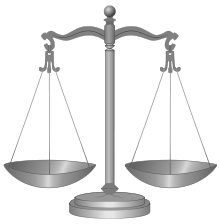Monopolization
In United States antitrust law, monopolization is illegal. The main categories of prohibited behavior include exclusive dealing, price discrimination, refusing to supply an essential facility, product tying and predatory pricing. Monopolization is a federal crime under Section 2 of the Sherman Antitrust Act of 1890. It has a specific legal meaning, which is parallel to the "abuse" of a dominant position in EU competition law, under TFEU article 102. Section 2 of the Sherman Act states that any person "who shall monopolize . . . any part of the trade or commerce among the several states, or with foreign nations shall be deemed guilty of a felony." Section 2 also forbids "attempts to monopolize" and "conspiracies to monopolize". Generally this means that corporations may not act in ways that have been identified as contrary to precedent cases.
| Competition law |
|---|
 |
| Basic concepts |
| Anti-competitive practices |
| Enforcement authorities and organizations |
Jurisprudential meaning
Under long-established precedent, the offense of monopolization under Section 2 has two elements. First, that the defendant possesses monopoly power in a properly-defined market and second that the defendant obtained or maintained that power through conduct deemed unlawfully exclusionary. The mere fact that conduct disadvantages rivals does not, without more, constitute the sort of exclusionary conduct that satisfies this second element. Instead, such conduct must exclude rivals on some basis other than efficiency.
For several decades courts drew the line between efficient and inefficient exclusion by asking whether the conduct under scrutiny was "competition on the merits". Courts equated such competition on the merits with unilateral conduct such as product improvement, the realization of economies of scale, innovation, and the like. Such conduct was lawful per se, since it constituted the normal operation of economic forces that a free economy should encourage. At the same time, courts condemned as "unlawful exclusion" tying contracts, exclusive dealing, and other agreements that disadvantaged rivals.[1] This distinction reflected the economic theory of the time, which saw no beneficial purposes for what Professor Oliver Williamson has called non-standard contracts.
More recently, courts have retained the safe harbor[2] for "competition on the merits". Moreover, the Supreme Court has clarified the standards governing claims of predatory pricing. At the same time, they have relaxed the standards governing other conduct by monopolists. For instance, non-standard contracts that exclude rivals are now lawful if supported by a "valid business reason", unless the plaintiff can establish that the defendant could achieve the same benefits by means of a less restrictive alternative.[3]
Notes
- See, e.g., United States v. United Machinery Co., 110 F. 295 (D. Mass. 1953).
- On the evolution of safe harbors, see Thibault Schrepel, A New Structured Rule of Reason Approach for High-Tech Markets, Suffolk University Law Review, Vol. 50, No. 1, 2017 at https://ssrn.com/abstract=2908838
- See Eastman Kodak Co. v. Image Technical Services, Inc., 504 U.S. 451 (1992).
References
- Areeda, Philip; Turner, Donald F. (1975). "Predatory Pricing and Related Practices Under Section 2 of the Sherman Act". Harvard Law Review. The Harvard Law Review Association. 88 (4): 697–733. doi:10.2307/1340237. JSTOR 1340237.
- Elhaughe, Einer (2003). "Defining Better Monopolization Standards". Stanford Law Review. 56: 253.
- Hovenkamp, Herbert (2000). "The Monopolization Offense". Ohio State Law Journal. 61: 1035. ISSN 0048-1572.
- Lopatka, John E.; Page, William H. (2001). "Monopolization, Innovation, and Consumer Welfare". George Washington Law Review. 69: 367, 387–92. ISSN 0016-8076.
- Meese, Alan (2005). "Monopolization, Exclusion, and the Theory of The Firm". Minnesota Law Review. 89 (3): 743. ISSN 0026-5535.
- Piraino, Thomas (2000). "Identifying Monopolists' Exclusionary Conduct Under Section 2 of the Sherman Act". New York University Law Review. 75: 809. ISSN 0028-7881.
- Schrepel, Thibault (2017). "A New Structured Rule of Reason Approach for High-Tech Markets". Suffolk Law Review. 50 (1). SSRN 2908838.